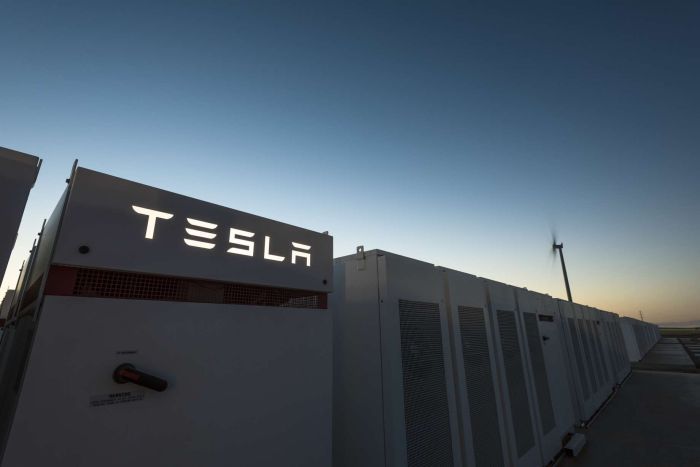Tesla’s ‘big battery’ in South Australia is already having a positive impact
The performance of South Australia’s new lithium ion battery unit has helped “take the straw off the camel’s back”, according to a new review.

The performance of South Australia’s new lithium ion battery unit has helped “take the straw off the camel’s back”, according to a new review.
An energy expert at The Australia Institute assessed how the world’s largest battery was performing since it was installed by Tesla in December 2017.
The review found that the battery is helping to stabilise the state’s energy demand, providing crucial breathing space for the national grid to meet supply on a second-by-second basis.
In particular it found that the battery was helping to iron out the gaps where renewable energy wasn’t available, as intended, and that the new battery demonstrated the “very valuable role that energy storage can play in the operation of an electricity supply system with high levels of renewable generation”.
This is good news for advocates of the technology who have long hoped that energy storage could provide the missing piece to ensure renewable energy’s long-term success.
Speaking to The Guardian on Friday, Hugh Saddler, the academic who undertook the review, said that the battery was working in “smooth synergy with wind farms”.
"Peak wind production is easily the cheapest way to charge the battery, and it stands ready to fill demand gaps if they emerge. The battery has been charging up overnight, when prices are very low and hitting the grid at the right time to keep price spikes lower than they would be otherwise."
30 megawatts of the battery’s overall capacity is given over specifically to help meet peak energy demand. While this only represents 1 percent of peak demand in the review period, the battery is already proving its worth. The remaining 70 is used in reserve to maintain the safety of the grid network.
"While the watts may seem small in the context of the whole system, the SA battery is providing critical power at the critical moment - in effect taking the straw off the camel's back", Saddler added.
The report also found that carbon emissions within Australia’s power sector were the lowest in January for 14 years. This is largely attributable to the success of the country’s large-scale energy target, which aims to source 33,000 gigawatt hours of electricity from renewables by 2020.
The report concludes that unless electricity consumption surges, “emissions and emissions intensity can be expected to continue their steady fall until 2021”.
Photo: Tesla/Timothy Artman
